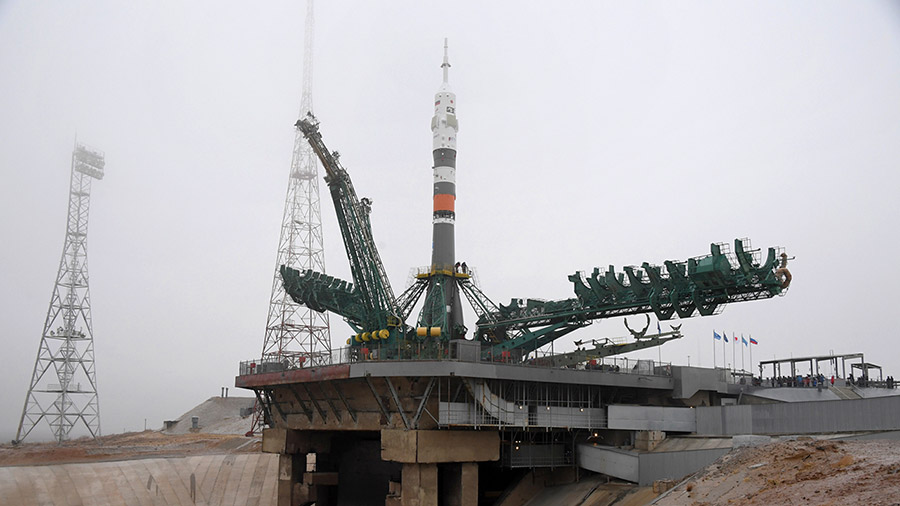
The Expedition 66 crew is getting ready to welcome three new visitors to the International Space Station on Wednesday. In the meantime, the seven orbital residents have started the work week on human research, space physics, and artificial intelligence.
In Kazakhstan, the Soyuz MS-20 crew ship has rolled out from its processing facility and is now standing vertical at its launch pad at the Baikonur Cosmodrome. It will blast off on Wednesday at 2:38 a.m. EST (12:38 pm Kazakh time) carrying Soyuz Commander Alexander Misurkin and spaceflight participants Yusaku Maezawa and Yozo Hirano to the orbiting lab. Just over six hours later, the veteran Roscosmos cosmonaut and the two Japanese space visitors will dock to the Poisk module beginning an 11-day stay at the space station. Live NASA TV coverage of the launch begins Wednesday at 2 a.m. on the agency’s website, and the NASA app.
Back in space, artery scans, eye checks and a hearing test filled a portion of the crew day. The astronauts are also continuing to clean up following last week’s spacewalk.
NASA Flight Engineer Thomas Marshburn spent Monday morning attaching electrodes to his right leg and scanning his femoral artery using an ultrasound scan device. Ground doctors monitored the activities in real-time to understand the accelerated aging characteristics that appear in an astronaut’s arteries.
ESA (European Space Agency) astronaut Matthias Maurer checked the eyes of NASA Flight Engineer Raja Chari using medical imaging gear. NASA astronaut Kayla Barron had a hearing assessment before joining Chari collecting and stowing blood and saliva samples for later analysis.
Barron also partnered with Marshburn stowing the tools they used to replace a failed antenna system during a six-hour and 32-minute spacewalk last week. Chari also helped out cleaning the spacesuit’s cooling loops that keep spacewalkers comfortable in the extreme environment of microgravity.
NASA Flight Engineer Mark Vande Hei spent the day swapping samples inside the Materials Science Laboratory to explore ways microgravity can improve the development of new and existing materials. Maurer set up the CIMON hardware to study how artificial intelligence could provide future support to astronauts.
Station cosmonauts Anton Shkaplerov and Pyotr Dubrov readied the Poisk module for Wednesday’s docking of the Soyuz MS-20 crew ship. The station duo also familiarized themselves with the visiting crew’s timeline and prepared the Russian segment for the new guests.
